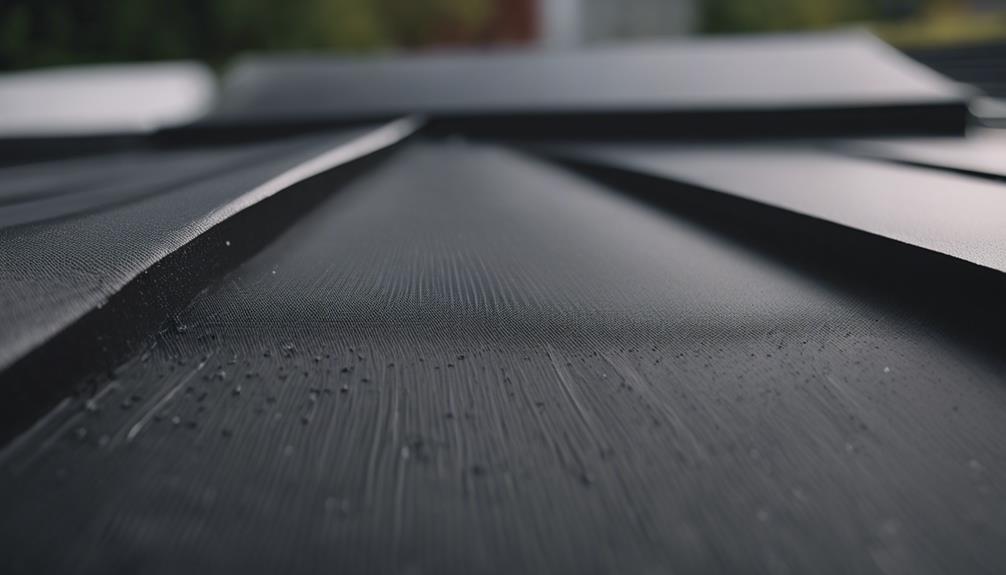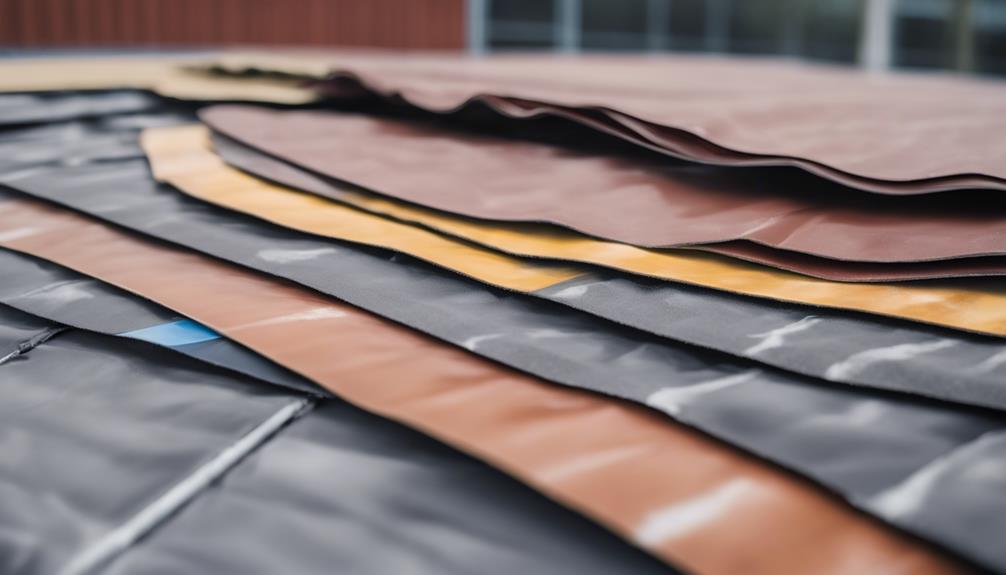What Are the Different Types of Single Ply Roofing Membranes?
Open the door to a world of roofing options with single ply membranes - discover the key to choosing the right one for your project!
Single-ply roofing membranes are an important component of modern roofing systems, providing durability, flexibility, and weather resistance. The most common single-ply roofings are TPO, PVC, and EPDM membranes.
These membranes, known for their durability, flexibility, and weather resistance, play a vital role in safeguarding buildings from the elements. Each membrane type offers unique characteristics and applications that cater to different requirements, making the decision-making process complex yet important for the success of any roofing project.
By exploring the nuances of these membranes and considering essential tips for selection, one can guarantee a well-informed decision that aligns with long-term roofing goals.
What Is a TPO Single Ply Roofing Membrane?
TPO single-ply roofing membranes, also known as Thermoplastic Polyolefin roofing membranes, are a popular choice within the roofing industry due to their durability and energy efficiency. TPO membranes are composed of a blend of polypropylene and ethylene-propylene rubber, providing a flexible yet sturdy material that can withstand varying weather conditions. These membranes are typically white or light-coloured, reflecting sunlight and reducing the building’s cooling costs.
One key advantage of TPO membranes is their ease of installation. They can be attached to the roof using various methods such as fully adhered, mechanically fastened, or ballasted. Additionally, TPO membranes are resistant to dirt, bacteria, algae, and debris build-up, reducing maintenance requirements over time.
Regarding longevity, TPO membranes have a lifespan of 15-20 years on average, making them a cost-effective roofing solution. They also offer excellent resistance to tears, impacts, and punctures, ensuring long-term protection for the building. Overall, TPO single-ply roofing membranes are a reliable choice for commercial and residential buildings seeking a durable, energy-efficient roofing solution.
What is a PVC Single Ply Roofing Membrane?
PVC (Polyvinyl Chloride) single-ply roofing membranes are known for their strength, chemical resistance, and flexibility, making them suitable for both commercial and residential roofing projects. Here are some key characteristics of PVC single-ply roofing membranes:
- Durability: PVC membranes have a long lifespan and can withstand harsh weather conditions.
- Energy Efficiency: They offer good energy efficiency by reflecting sunlight and reducing cooling costs.
- Installation Flexibility: PVC membranes are flexible and can be installed using various methods such as fully adhered, mechanically fastened, or ballasted.
These characteristics make PVC single-ply roofing membranes a popular choice among contractors and building owners looking for a reliable and cost-effective roofing solution.
What Is EPDM Single Ply Roofing Membrane?

The EPDM single-ply roofing membrane, also known as Ethylene Propylene Diene Terpolymer, is a widely used roofing material known for its durability and weather resistance. EPDM membranes are synthetic rubber sheets typically made of ethylene, propylene, and a diene comonomer, offering excellent resistance to ozone, ultraviolet light, and severe weather conditions.
These membranes are available in various thicknesses, with 45 to 60 mil being the most common for commercial roofing applications. EPDM roofing systems are typically installed using fully adhered, mechanically attached, or ballasted methods, providing flexibility in application based on project requirements.
EPDM membranes have a proven track record for longevity, with some systems lasting over 30 years when properly installed and maintained. Due to their flexibility, EPDM membranes can accommodate building movements without compromising the integrity of the roofing system. EPDM is also resistant to heat, hail, and thermal shock, making it a popular choice for flat and low-slope roofs in various climates.
What Are the Key Factors to Consider When Selecting the Right Roof Membrane?

For perfect roofing performance, meticulous consideration of key factors is essential when selecting the appropriate single-ply membrane.
First, evaluate the environmental conditions the roof will be exposed to, such as UV radiation, temperature fluctuations, and chemical exposure. Understanding these elements will help determine if a PVC, TPO, or EPDM membrane is most suitable.
Next, assess the building’s location and local building codes to guarantee compliance and longevity of the roofing system. Consider the membrane’s thickness, with thicker options providing increased durability but potentially at a higher cost.
Additionally, evaluate the membrane’s method of installation, whether through fully adhered, mechanically attached, or ballasted systems, depending on the roof’s design and structural needs. Lastly, review the manufacturer’s reputation, warranty offerings, and technical support to guarantee a quality product and assistance throughout the roof’s lifespan.
Frequently Asked Questions
How Do Single Ply Roofing Membranes Compare in Terms of Cost and Longevity?
In evaluating single-ply roofing membranes, comparing cost and longevity is essential. Cost varies based on material type and installation complexity, while longevity is influenced by maintenance and environmental factors. Properly installed and maintained membranes can provide cost-effective long-term protection.
Are There Any Special Considerations or Limitations When Installing Single Ply Roofing Membranes in Extreme Weather Conditions?
Special considerations when installing single-ply roofing membranes in extreme weather include ensuring proper adhesion in hot climates and using thicker membranes for enhanced durability in cold regions. Wind uplift resistance and temperature differentials must be carefully evaluated.
Can Single Ply Roofing Membranes Be Easily Repaired or Patched if Damaged?
Single-ply roofing membranes can typically be easily repaired or patched if damaged, depending on the extent of the issue. Proper repair techniques and compatible materials are essential to maintain the integrity and longevity of the roofing system.
Are There Any Environmental Benefits or Drawbacks to Using Single Ply Roofing Membranes?
Single-ply roofing membranes offer environmental benefits like energy efficiency, recyclability, and reduced carbon footprint during installation. However, drawbacks include potential chemical off-gassing and limited durability compared to other roofing systems. Proper maintenance and material selection can mitigate environmental impacts.
How Do Single Ply Roofing Membranes Perform in Terms of Energy Efficiency and Insulation Properties?
Single-ply roofing membranes excel in energy efficiency and insulation properties. Their reflective surfaces reduce heat absorption, enhancing cooling efficiency. Additionally, they offer options for adding insulation layers, bolstering thermal performance and reducing energy consumption in buildings.